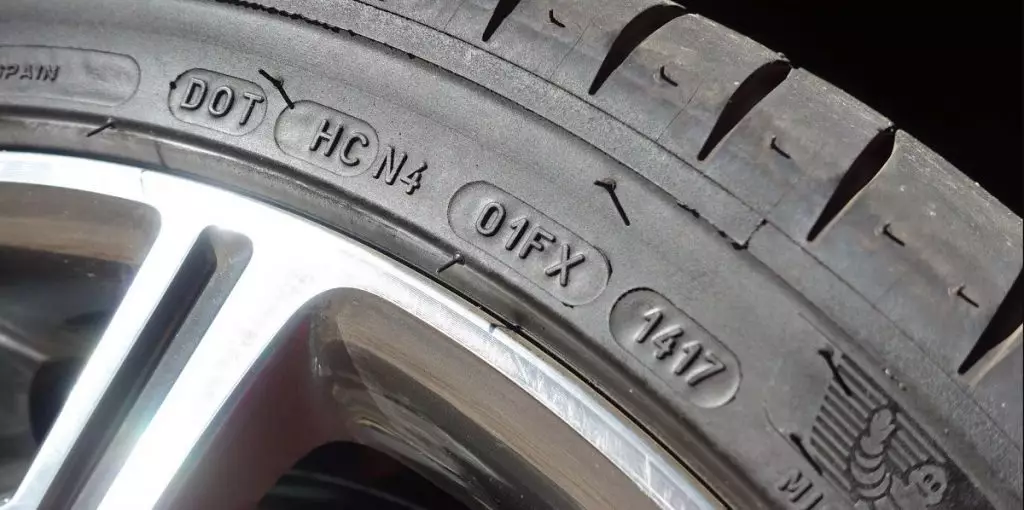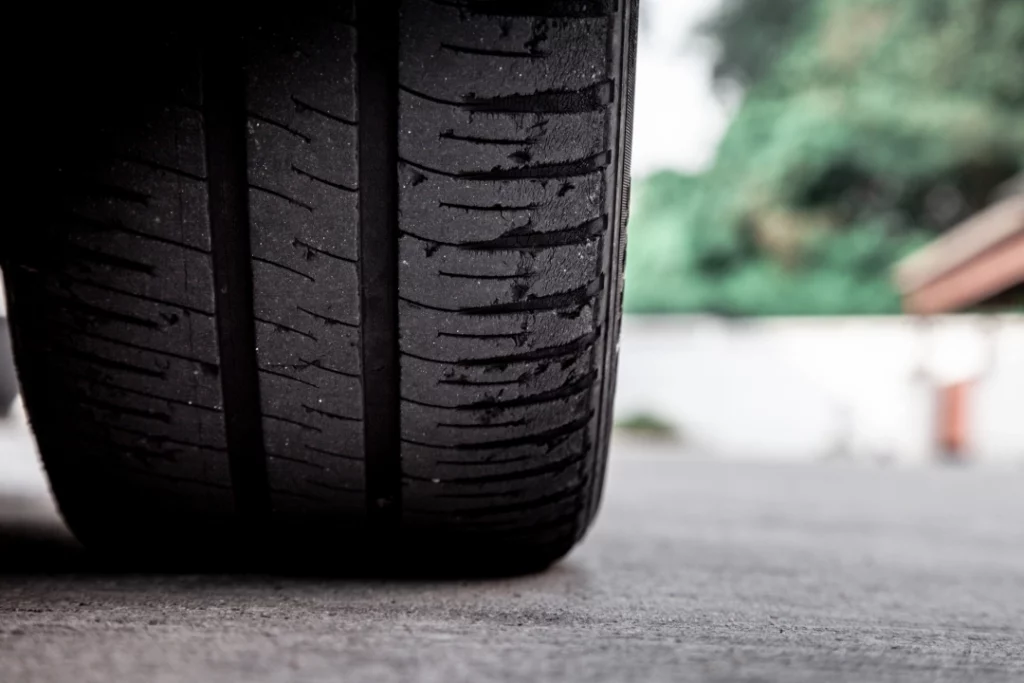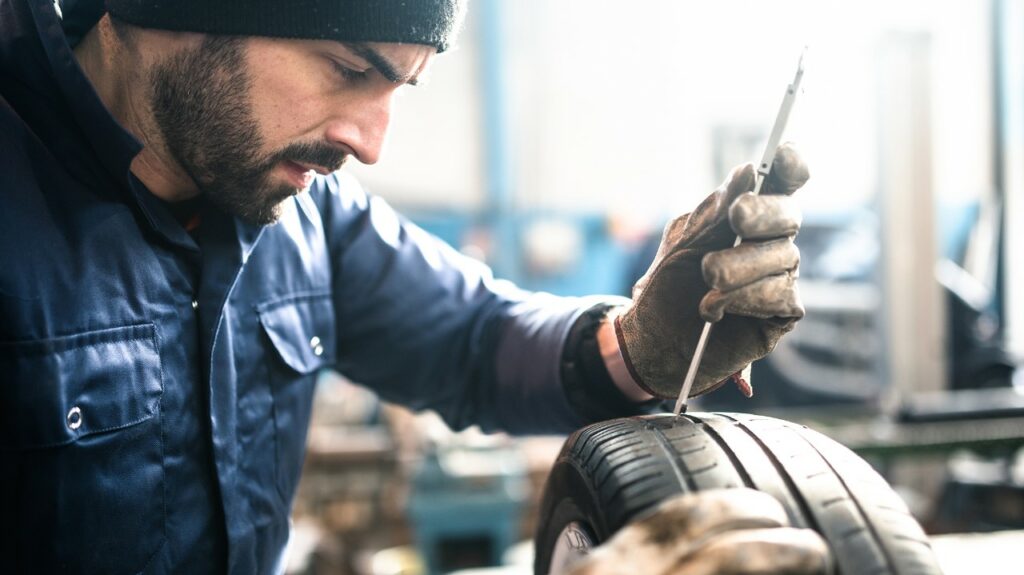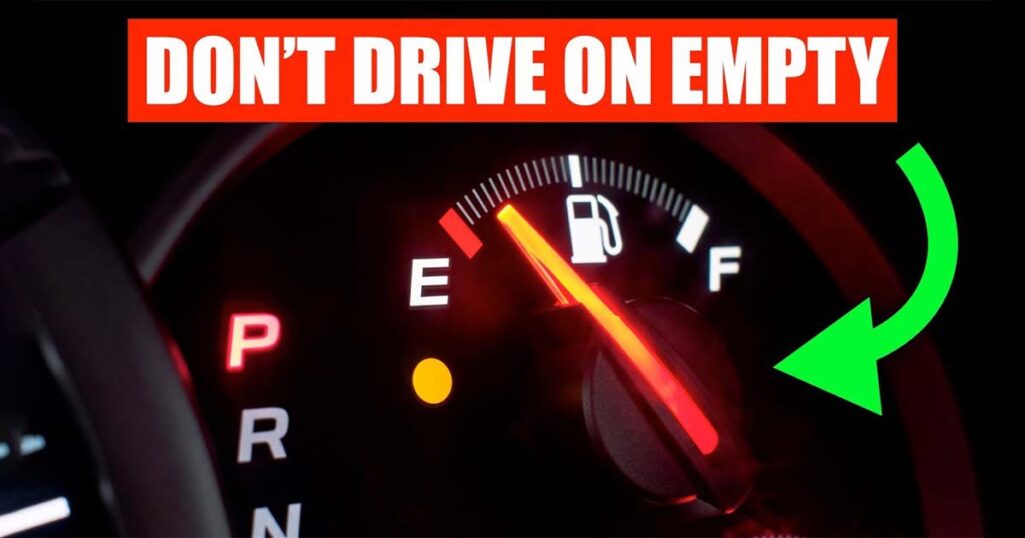
Tires are the unsung heroes of the automotive sector. They absorb all the shocks and potholes on the road and allow us to travel around in comfort. Tires’ synthetic natural rubber construction, combined with their rigid belt and body plies, ensure they last a long time. This allows them to withstand the stress of load as well as heat generated by friction.
However, tires can be susceptible to damage just like any other part of a car. In addition, there are damages that are beyond repair. One such damage can appear within the tire sidewall as a bulge, cuts, or bits of chipped-off rubber. Sidewall damage, in particular, can be a major issue for your car’s tires.
Whether you’ve been in an accident or just noticed cracks in the sidewall, you might be wondering if you need new tires or if you can get away with a repair. Read on to find out everything you need to know!
What is a Tire Sidewall?

The tire sidewall is the vertical area of any tire extending from the rim to the shoulders. It is an integral part of any tire since it protects the cord plies from damage and maintains the structural integrity of the tire. Damaged plies can make the structure much less stable and even cause blowouts.
The stiffness of the sidewall is directly proportional to the performance of the tire. For instance, touring tires have softer sidewalls for comfort, while performance tires often have more stiff sidewalls for greater responsiveness and stability.
Tire sidewall damage is a serious issue that is difficult to repair. It’s like trying to patch a flat tire with bubble gum; that won’t work. Moreover, there are a few different kinds of tire sidewall damage, and not all of them are the same. Let’s take a closer look at them.
What is Sidewall Tire Damage?
Any damage to the sidewall of a tire is referred to as sidewall tire damage. This includes cracks, punctures, and even regular wear and tear. The sidewall is part of the tire between the tread and the bead. It helps support the vehicle’s overall weight.
Types of Tire Sidewall Damage
Tire sidewall damage can occur in a number of ways, so it’s important to check your tires on a regular basis. Even though most drivers don’t check their tires, you could ask your tire technician to do it for you. Here are several types of sidewall damage that could affect your tires.
Chipped or Cut Sidewall Rubber:

Chipped rubber is one of the most typical forms of tire sidewall damage. This kind of damage usually happens when the sidewall of the tire hits something rough, like sharp rocks or a curb.
Chips can be anywhere from a few millimeters to a centimeter deep. Most of the time, the tire’s cords or plies won’t be visible. Yet, in certain situations, the cords may protrude through the sidewall, especially if the sidewall has been pierced or cut. Chopped sidewall rubber can compromise the tire’s integrity, eventually leading to a rupture or a sudden loss of air pressure.
Tire Sidewall Cracks:

Cracking is another common sidewall damage that can occur to a tire. In contrast to chips or cuts, sidewall cracks can reveal the tire’s inner plies, risking the tire’s stability. This kind of damage is usually caused by old or low-quality tires.
Cracks can occur as a result of prolonged exposure to harmful environmental factors such as Ultraviolet radiation, high temperatures, and chemicals. Sidewall cracks can cause a sudden loss of air pressure, which could result in the tire blowing out while driving.
Sidewall Bulge (Bubble):

Sidewall bulges, commonly referred to as bubbles, are frequent in older tires. Overloading or underinflation of the tire can result in this kind of damage. Sidewall bulges may not seem very dangerous, but they indicate a serious problem with the tire’s internal components.
These occur when the tire’s inner cables or plies are harmed, which causes a defect in the sidewall structure. Having a tire with a bulge in the sidewall increases the risk of a rupture or a sudden and rapid loss of air pressure.
Causes of Tire Sidewall Damage
Sidewall tire damage can be caused by many factors resulting from the driver’s negligence regarding tire quality. These issues include tire age, manufacturing issues and poor quality checks, overloading, under-inflation, and tire wear.
Tire Age:

Tires are designed to handle challenging driving conditions and a set amount of weight. Yet, their elasticity, strength, and durability are not everlasting. Even if you don’t drive your car frequently and there is still tread on the tires, the rubber can go bad over time.
Tires have an expiry, even if you don’t use them at all. Most tire makers estimate a lifespan of 8-10 years from the time of production. After that, the rubber parts would dry out and become brittle. In addition, the tires’ inner plies wear down, causing the components to break.
Manufacturing Defects:

Cheap tires are the main cause of sidewall damage these days. Today’s market is actually flooded with tires from startup companies with dubious reputations. You’ll note that many brands sell tires at unrealistically low prices—often three times as low as a quality tire.
These companies do not have modern manufacturing facilities or effective internal quality control. Additionally, they don’t invest in R&D and typically buy components from vendors with poor quality assurance practices. These tires frequently have sidewall splits or bulges as a result of manufacturing flaws.
Underinflated/Overinflated Tires:

You can get the maximum performance, comfort, and fuel economy out of your tires by running them at the optimum pressure. However, driving with them underinflated (or overinflated) may reduce performance and may cause damage to the sidewalls.
Inadequate tire inflation could cause sidewall bulges by increasing pressure on the inner cord plies. Keep in mind that the majority of the weight of your tire is supported by the air within the tire. Hence, a lack of air in tires could cause a variety of problems. But be careful not to overdo it because too much air may also cause sidewall bubbles.
Overloading:

All tires are labeled with their maximum load ratings or the heaviest weights they can safely support. When you overload your vehicle over its weight capacity, you put undue strain on the suspension and, ultimately, on the tires.
They become flattened or even burst under excessive weight. It results from the expansion of air pressure on the sidewall and the heat produced by movement-induced friction. Not to mention that overloading is also one of the causes of poor handling. This causes the car to sway or jiggle from side to side as it travels.
Tire Wear:

Significant tire wear makes them more likely to overheat quickly, which can lead to a blowout. Furthermore, the worst-case scenario is when the reinforcement that keeps the shape of the tires is already visible at the sidewall; hence, an accidental curb contact will result in sidewall damage to the tire.
Driving on worn-down tires causes them to flare up more quickly, and visible cords indicate that the tires could come apart at any moment. They are more prone to harm, and any bump on the road can cause them to lose air rapidly and lead to a puncture.
Tips to Avoid Sidewall Tire Damage?
You can reduce the chances of having your tire’s sidewall suffer from damage by following these instructions:
Check air pressure regularly:

If there are any obvious signs that your tires may be deflated, you should have them checked at least once a month. You should also take a cold tire pressure reading because the air pressure changes with temperature.
Always keep a tire pressure gauge and a portable air pump that can be powered by your car’s power outlet in your car. These tools don’t take up much room and can even be kept in the same storage unit as your standard repair tool set.
Match the vehicle’s recommended tire load and speed ratings:

It is also important that you know how to read tire details. The code that is imprinted on your tires specifies not only the size but also the recommended speed rating. The load limit with the advised tire air pressure is also clearly stated on the tire information sticker on your car’s door frame.
Check whether the codes on your tires and the door jamb or other components of the car are the same. Higher load indices and speed ratings result in better-reinforced tires. They are capable of withstanding severe weather conditions.
Avoid road hazards:

It’s smart to map out your travels in advance. Avoid regions where road maintenance or repair is currently taking place. These locations contain a lot of building waste, including sharp stones and other pointed objects like nails.
They could erode the sidewall of your tires. Moreover, keep an eye out for potholes in the road ahead. While driving close to a curb, be careful not to get too close, or you risk damaging your tire’s sidewall.
Have your tires inspected by professionals:

An expert might catch something you might have ignored. During the course of their careers, tire experts and technicians have dealt with a variety of similar issues. They might also look for issues with your tires that you missed while evaluating them.
Uneven wear or a puncture could lead to bigger problems down the road. To avoid further problems, the tires may require rebalancing, rotation, or repair. So, if you care about your tire’s health, you need to commit to a consistent routine.
Can You Repair the Sidewall Tire Damage?
Regrettably, sidewall damage cannot be repaired. This is so because any damage to a tire’s sidewall undermines the integrity of the tire. This includes all types of damages, such as cracks, dents, or even regular wear and tear.
It makes the tire far more likely to fail and prone to a blowout, which can be quite dangerous. If the sidewall has been compromised, the tire must be replaced as soon as possible.
Can You Drive with a Damaged Sidewall Tire?
You need to replace your tire as soon as you see any sidewall damage on it. Throw away the spare tire in your trunk and head to the nearby tire store to get a replacement. If you are concerned about your spare tire, you might consider calling for roadside help.
Only because you can drive with it doesn’t mean you should. Remember that safety is a top priority from the moment you turn on the car. Tire sidewall damage has the potential to blow out at any time. It might put you and everyone else on the road in danger.
Frequently Asked Questions:
Here are some frequently asked questions about tire sidewall damage:
How much sidewall damage is considered too much?
The right answer is that any amount of damage is too much. But, if the damage to the tire is only superficial, it should be fine to use for driving. When the damage is more than an eighth of an inch deep, you should change your tire and, if possible, put on your spare tire. You may now drive to your local store and seek their expert help.
Is sidewall tire damage covered under warranty?
Tire manufacturers offer a number of different warranties, but the mileage warranty is by far the most popular. If the tire does not achieve the promised mileage, this will cover it. The majority of tire warranties, however, do not include sidewall damage because it is thought to be a regular part of wear and tear.
While some manufacturers may cover sidewall damage under a limited warranty, this is not always the case. The most effective approach is to always check with your manufacturer to verify if your tires are still under warranty before having them changed.
Are all tire types prone to sidewall damage?
Sidewall damage can occur to all kinds of tires. This damage is primarily caused by how the tires are utilized and the terrain over which they are driven. Larger sidewall tires may be more vulnerable to damage from curb strikes. This is because there is more surface area that can get damaged.
Conclusion
Although it’s a serious safety concern that most often leads to blowouts and life-threatening mishaps, tire sidewall damage is still not taken seriously by drivers. Tire sidewall damage is potentially dangerous, but it may be prevented.
You can keep your automobile operating smoothly by taking a few easy actions to help prevent sidewall tire damage. If you discover any damage, don’t be afraid to bring your vehicle to a professional to have it checked and replaced if necessary. You can help keep your car on the road for a long time with regular maintenance and upkeep.




